
Table of Contents
When planning a concrete sidewalk installation in Austin, TX, with the help of Ace Concrete Contractors Austin, weather plays a pivotal role in the process. High temperatures can cause the concrete to dry too quickly, leading to cracks, while low temperatures can result in a weak, crumbly surface. Humidity levels, precipitation, and wind also create unique challenges affecting curing. You need to consider these factors to avoid issues that compromise the durability of your installation. So, how do you navigate these weather-related obstacles to ensure a long-lasting sidewalk? Let’s explore the specifics of each condition and what adjustments you can make.
Temperature Extremes
Extreme temperatures can significantly impact the quality and durability of your concrete sidewalk installation. When it’s too hot, the concrete can dry too quickly, leading to cracking and reduced strength. You’ll want to avoid pouring concrete in temperatures above 90°F. Instead, schedule your project for early morning or late afternoon when it’s cooler. On the other hand, if it’s too cold, the concrete won’t set correctly. Freezing temperatures can cause the water in the mix to freeze, leading to weak, crumbly concrete. Always aim to pour concrete when the temperature is above 40°F and use insulating blankets if necessary.
Humidity Levels
While temperature extremes are vital, humidity levels also play a significant role in concrete sidewalk installation. When high humidity, the concrete curing process can slow down, which might delay your project. On the other hand, low humidity can cause the concrete to dry too quickly, leading to cracks and weakened structure. You’ll want to monitor and control the humidity to ensure optimal curing. Using curing compounds or water sprays can help maintain the proper moisture balance. Austin’s fluctuating humidity levels mean you’ve got to be vigilant. Proper planning and adjustments based on current humidity can make a big difference in the durability and longevity of your concrete sidewalks.
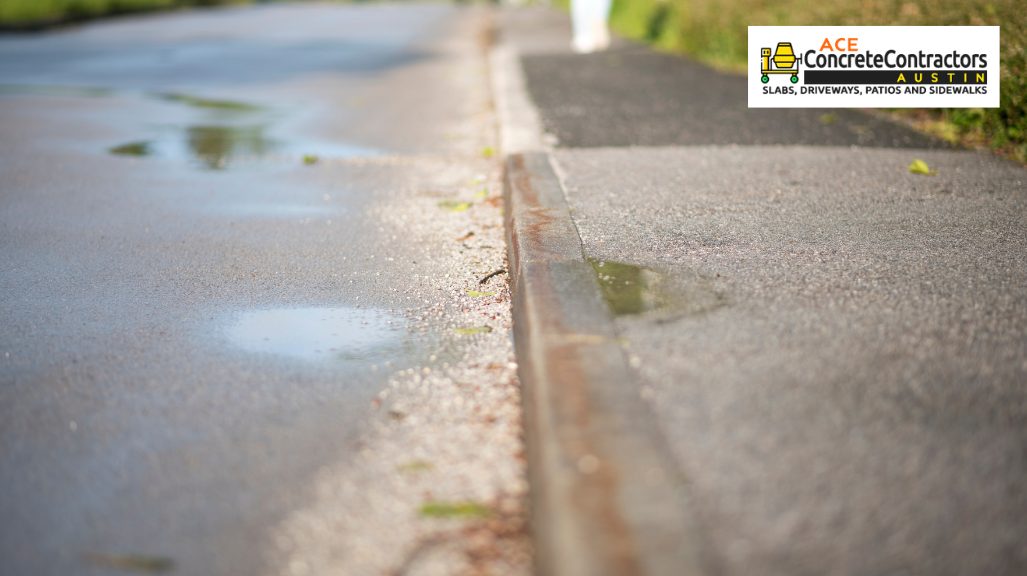
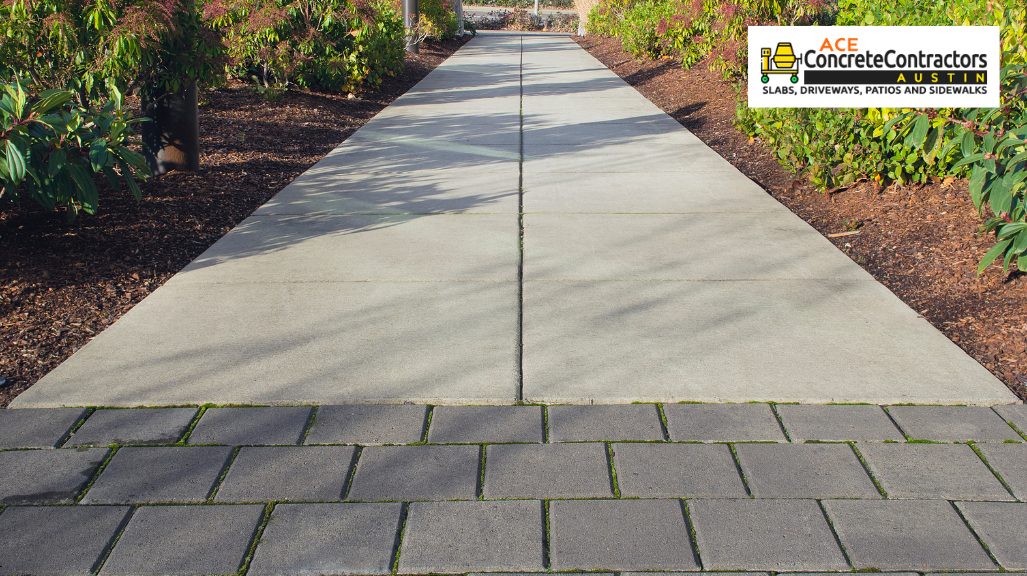
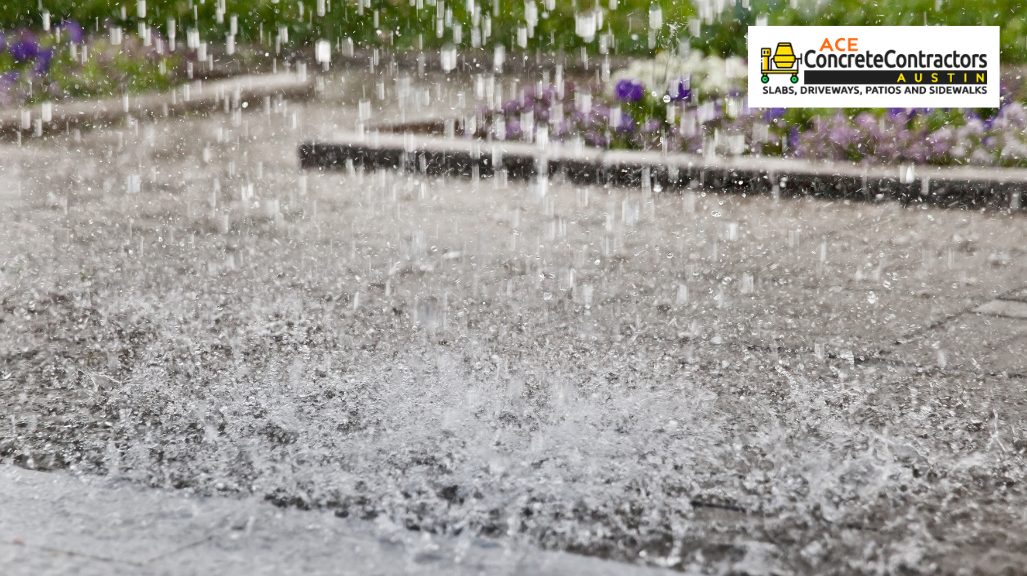
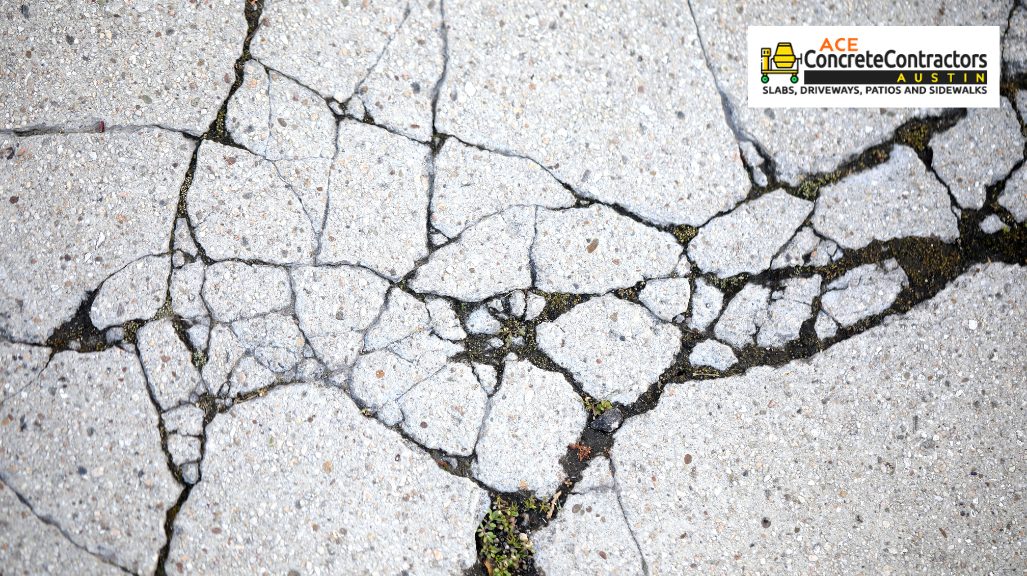
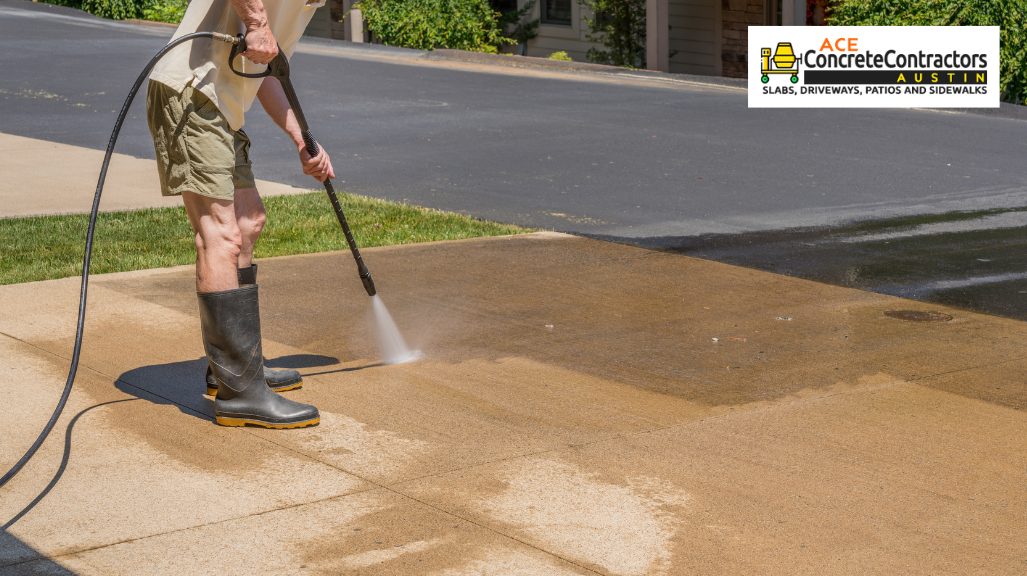
Precipitation Impact
Rainfall can significantly disrupt your concrete sidewalk installation plans. When it rains, excess water can weaken the concrete mix, causing delays and compromising the integrity of the sidewalk. Water can wash away cement, leading to an inconsistent mix that affects the final strength. Additionally, rain can cause the surface to pit and become uneven, resulting in a poor finish. If concrete is poured during a downpour, it mightn’t set correctly, leading to cracks and other defects over time. Monitoring weather forecasts and rescheduling your project if rain is expected is crucial. Covering freshly poured concrete with plastic sheets can help protect it from unexpected showers, ensuring it cures correctly and maintains its durability.
Find Out More: Top Benefits of Using Concrete in Residential Construction Projects
Wind Conditions
Strong winds can pose significant challenges during concrete sidewalk installation. When working with wet concrete, gusty conditions can speed up evaporation, causing the surface to dry too quickly. This rapid drying can lead to cracks and a weakened structure. Additionally, debris carried by the wind can land on the wet concrete, creating imperfections and compromising the finish. To combat these issues, you should use windbreaks or barriers to shield the work area. Covering the concrete with plastic sheeting can also help retain moisture and protect it from debris. Monitor weather forecasts and choose installation times when wind speeds are lower. By taking these precautions, you’ll ensure a smoother and more durable sidewalk.
Seasonal Variations
Seasonal variations significantly impact the success and durability of concrete sidewalk installations. In Austin, TX, summer’s high temperatures can cause the concrete to set too quickly, leading to cracks and reduced strength. To avoid this, you should pour concrete during more excellent parts of the day and keep it moist as it cures. Winter poses its challenges. Cold weather can slow the curing process, making the concrete more susceptible to damage from freeze-thaw cycles. You’ll need to use blankets or heaters to maintain optimal curing temperatures. Spring and fall offer more moderate conditions, but unpredictable rains can still affect the installation. Always check the weather forecast and be prepared to cover your work to protect it from sudden downpours.
Frequently Asked Questions
How Does Soil Type in Austin Affect Concrete Sidewalk Installation?
You’ve got to consider Austin’s clay-heavy soil. It expands and contracts with moisture changes, causing concrete to crack. Proper preparation and using the right mix can help ensure your sidewalk withstands these soil movements.
What Are the Best Times of Day for Pouring Concrete in Austin?
It would be best if you poured concrete either early in the morning or late in the afternoon.
These times help avoid the intense midday heat, ensuring the concrete sets properly and reducing the risk of cracking.
How Long Should Concrete Cure Before Use in Austin's Climate?
It would help to let the concrete cure for at least seven days before any light use, but ideally, wait 28 days for full strength. Austin’s climate can affect curing, so keep it moist and avoid extreme temperatures.
What Preparation Is Needed for Concrete Installation in Austin's Urban Areas?
You must clear debris, ensure proper drainage, compact the soil, and set up sturdy forms. Also, remember to check for underground utilities before you start. Proper preparation guarantees a durable, long-lasting concrete installation.
Are There Specific Concrete Mixes Suited for Austin's Environmental Conditions?
Yes, it would help if you used specific concrete mixes tailored to Austin’s conditions. Opt for mixes with additives to enhance durability against temperature fluctuations and humidity. Local suppliers often recommend the best formulations for the area’s unique climate.
Conclusion
In Austin, TX, weather is crucial in concrete sidewalk installation. You’ve got to consider temperature extremes, humidity levels, precipitation, and wind conditions to ensure a durable sidewalk. By monitoring these factors and adjusting your pouring and curing practices, you can avoid common pitfalls like rapid drying, cracking, or weak concrete. Stay vigilant about weather conditions, and you’ll ensure your sidewalk stands the test of time.
